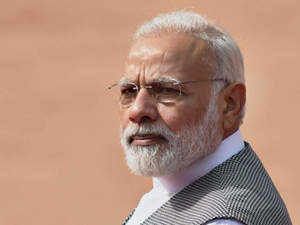 PTI
PTIThe PM is a master sloganeer. The first one in public memory, ‘Zero Defect, Zero Effect’, wasn’t very clear. That Indian firms should reduce defects in their manufactures is obvious. But why should that have ‘zero effect’?
Then came the one that made waves: ‘Make in India’. It had a hoary history. Although Jawaharlal Nehru had no slogan for it, favouring Indian firms and products and throwing out imports and foreign products was done by Nehru’s and his daughter’s governments for decades, leaving India far behind the more open economies of East Asia. ‘Beti Bachao, Beti Padhao’ had relevance. But no action followed.
The latest, ‘Vocal for Local’, rhymes well, and ‘Atmanirbhar Bharat Abhiyan’ is good, hard-to-pronounce Sanskrit. But both mean the same thing: Make in India.
Manufacture of ideas has fallen far behind the invention of slogans. And the idea remains as wrong as it was half a century ago. India punishes import of consumer goods; they are mostly made in India. Services are also kept out.
And imports of equipment and industrial inputs actually help Indian industry. Making them in India would make it even less competitive. This time, too, the PM could not resist his love of alliteration: land, labour, liquidity, laws. What about them? What do they have in common? What will he do to them? The reforms of the last six years have made the economy more resilient. If they have, why is it in such trouble?
He wants to make Indian firms adopt efficiency and quality and prepare India for competition in the global supply chain. The industrial protection his government introduced in the past six years has done precisely the opposite. But not a word from Modi about dismantling it.
The poor have suffered a lot, we will increase their strength.’ But their sufferings peaked with the lockdown, which his government imposed. Could he have thought about them before acting so decisively? Finance minister Nirmala Sitharaman has the difficult task of converting slogan into policy. But she loves detail. She is good at collecting ideas — good, bad and indifferent ideas — from her colleagues and turning them into policies.
Some of them are brilliant, while some make no sense. Many are old policy announcements once more repeated. News-pursuant FMs have created dozens of welfare schemes over the years. Sitharaman has allocated varying amounts to some of them.
For instance, the Build and Construction Workers’ Welfare Fund can give relief to workers. If so, what was it doing till now? The District Mineral Fund will now expand medical tests. What have minerals to do with medicines? If it was funding tests already, what does expansion add to them? It sounds like RBI’s emergency health package of Rs 15,000 crore. Did you know RBI was in the business of health packages? I didn’t.
The Reserve Bank of India has been actively pushing banks to lend more. In the global crisis of 2008, European banks were not lending. So, the European Central Bank created long-term refinancing operations to lend them money against their past loans, and gave them money to raise lending.
Last March, RBI caught on and created a targeted long-term refinancing operations (TLTRO) fund — targeted because it wanted banks to target those small and medium enterprises that were in trouble. Now, it has offered them money to lend to finance companies that have got into trouble because of their loans to those SMEs.
Such policies of throwing good money after bad are common in difficult times. But one reason why Indian banks are chronically in trouble is that Sebi long ago destroyed the equity market with overregulation. Indian firms have little access to risk capital, and hence raise it from banks, calling it loans. RBI has lent billions to banks to refinance those loans.
It will never get its money back. The FM has, for the first time, shown some awareness of the problem. But her solution is weird. GoI will facilitate— whatever that means — provision of Rs 20,000 crore as subordinate debt. That is, debt that does not have to be paid until all other loans have been repaid.
In other words, banks will be asked to give loans with an informal guarantee that they are gifts, unless the bankrupt firm starts making huge profits some day. ‘Micro, small and medium enterprises’ is a typically wordy official term, collapsed to MSMEs. The special category was created decades ago, and GoI will be right to redefine them. But what is so special about them? Should they be a separate category? It was created because government banks were reluctant to lend to them.
But its creation made them no less reluctant. GoI gave public sector banks order after order to give MSMEs favourable treatment, with little effect. The way to promote smaller firms is to create competition in the credit market by allowing many more private banks and, above all, by creating a vibrant equity market.
Nirmala Sitharaman’s intentions are good. But her analysis needs improvement.
The writer is former chief economist, ministry of finance, GoI
Download The Economic Times News App to get Daily Market Updates & Live Business News.
Subscribe to The Economic Times Prime and read the ET ePaper online.
Read More News on
Download The Economic Times News App to get Daily Market Updates & Live Business News.
Subscribe to The Economic Times Prime and read the ET ePaper online.









 Get Unlimited Access to The Economic Times
Get Unlimited Access to The Economic Times
